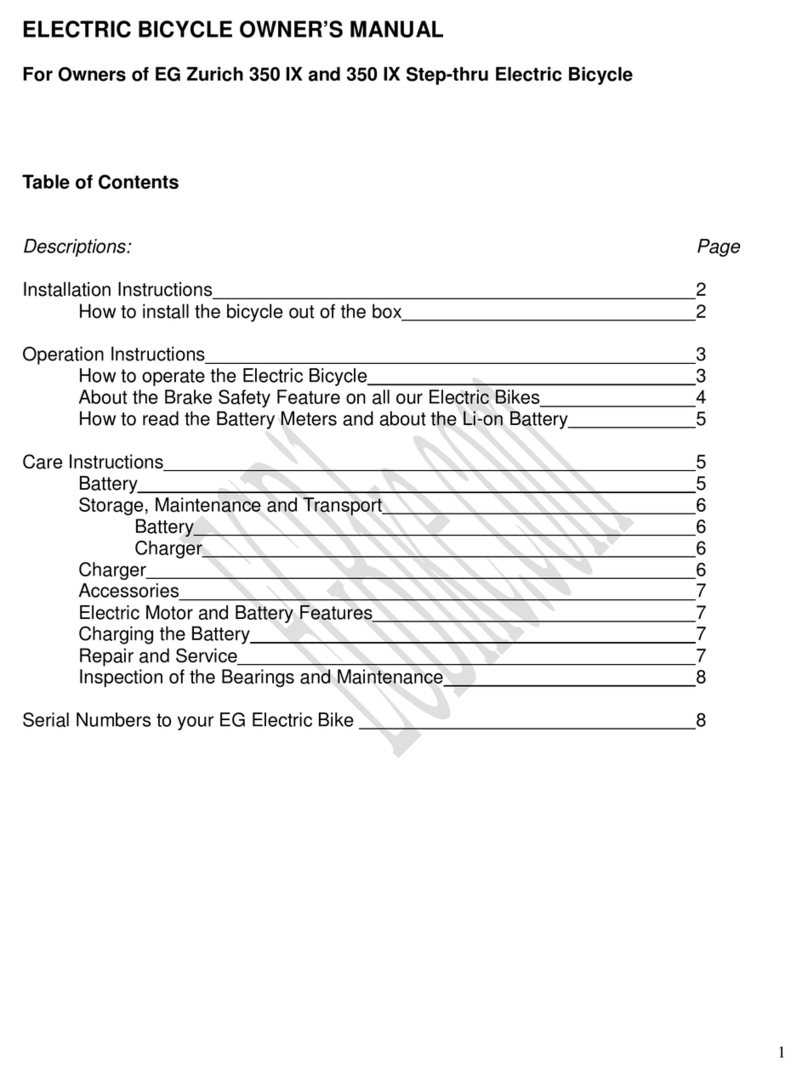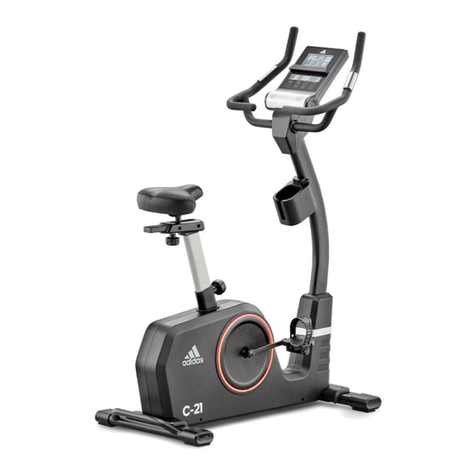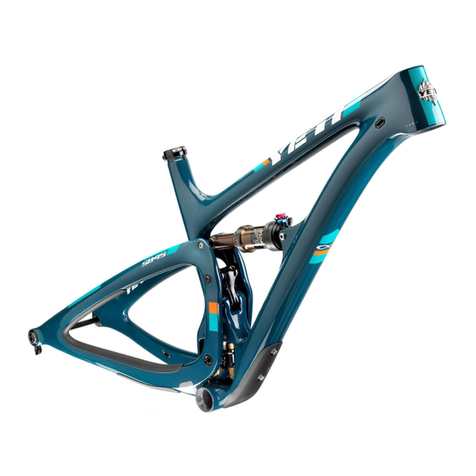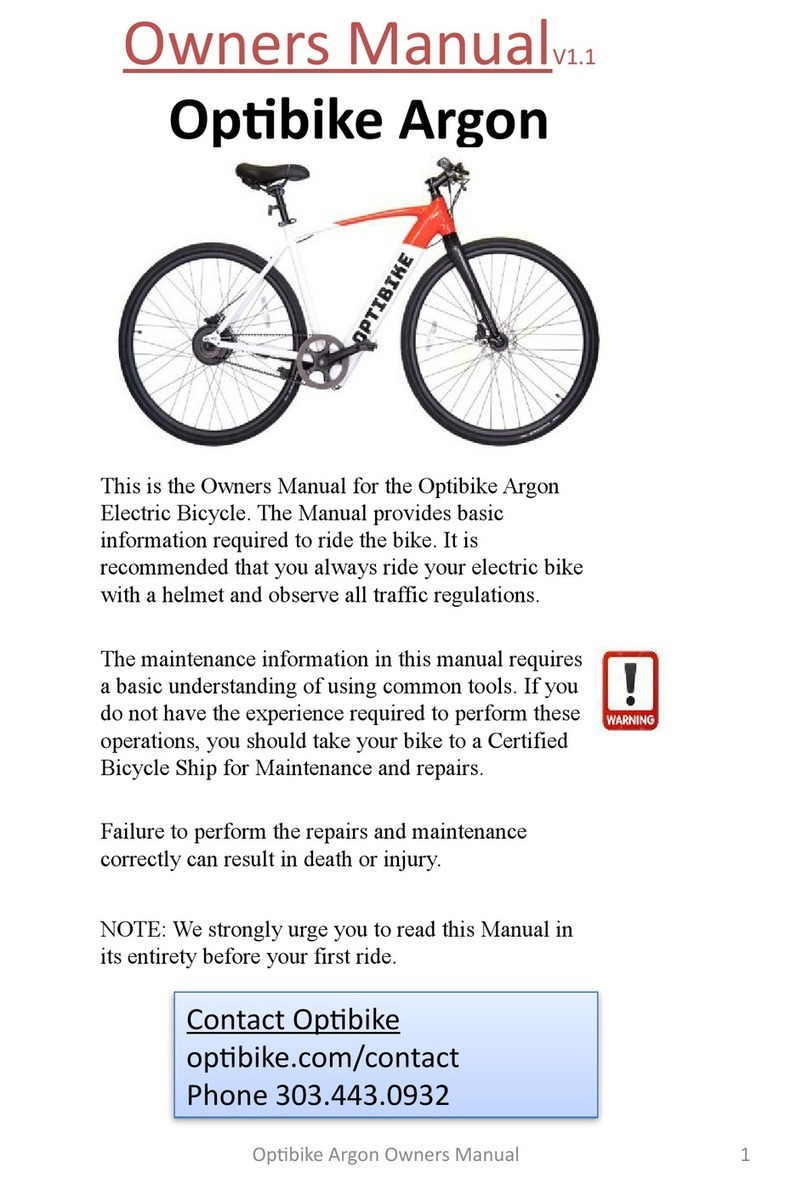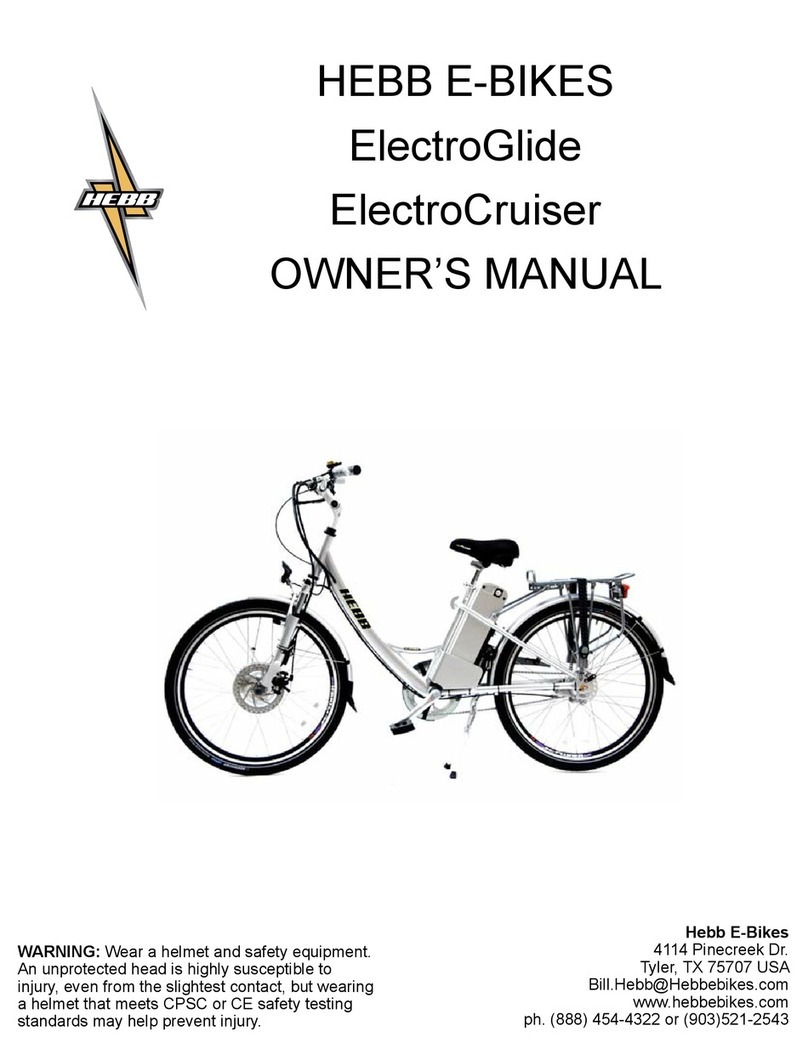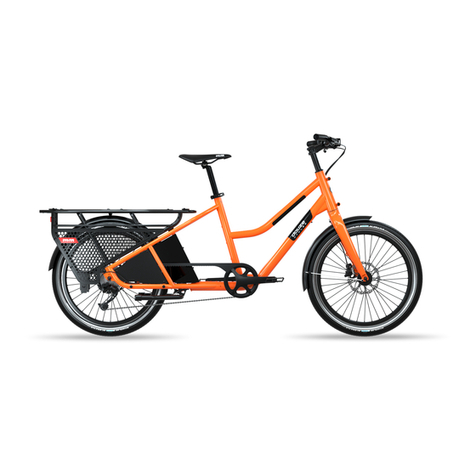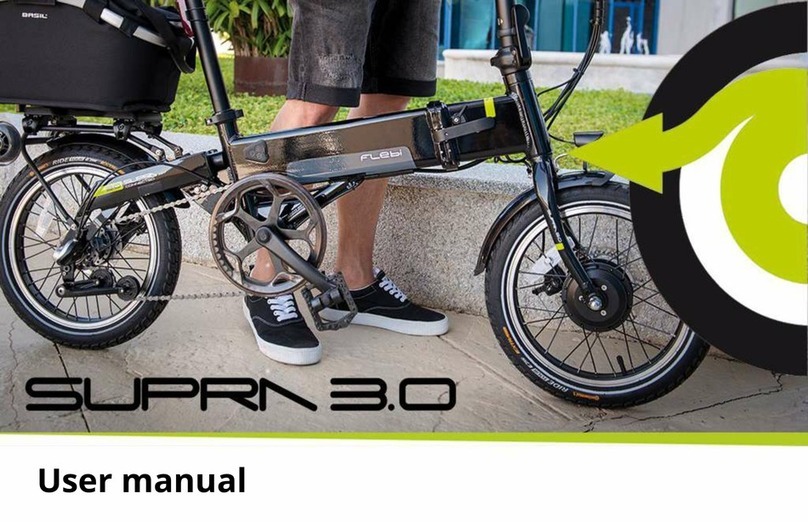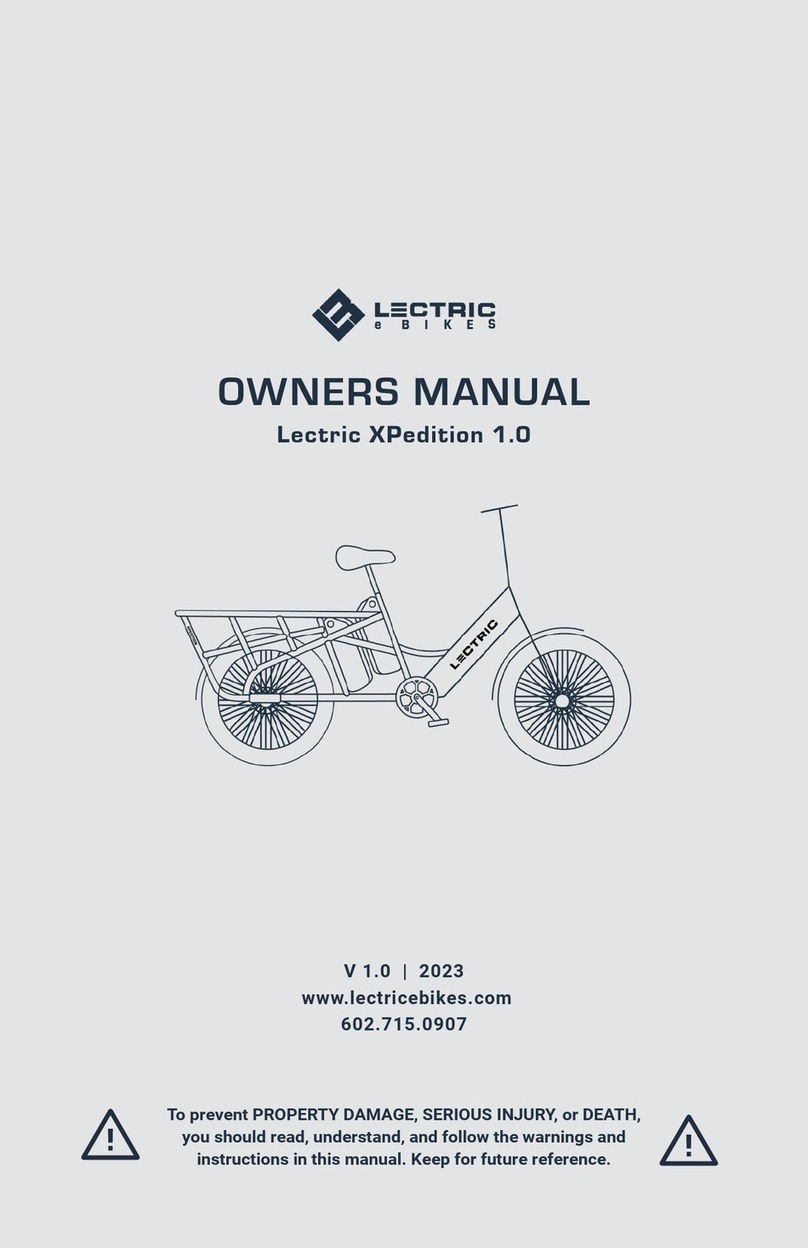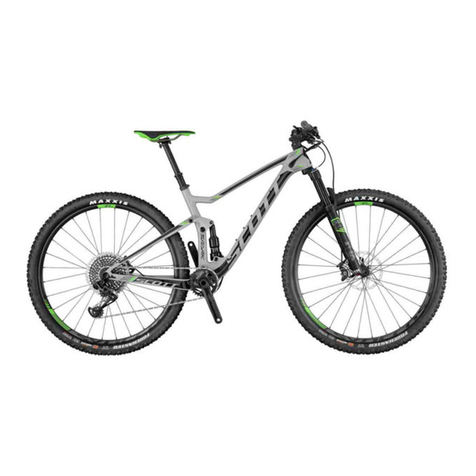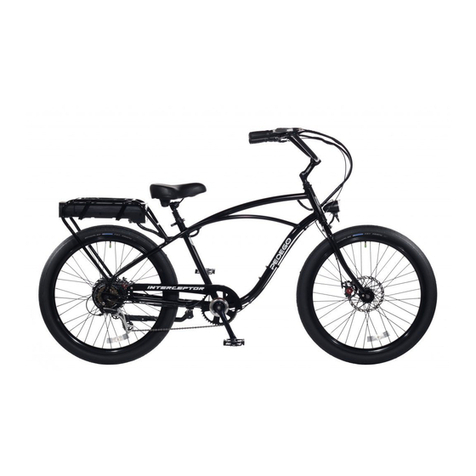Nesco K-POP KP-1600T User manual

Instruction Manual
คู่มือการใช้งาน
Folding Bicycle
KP-1600T

1

2

3


5


7




11

12

13


15

English
Dear Customer Thank you for choosing a our product. The experience,
design, feature and technology of this appliance, as well as the strict quality
controls used during manufacture, will provide full satisfaction for many years.
Introduction
Carefully read and understand this manual and any label attached to the tool
before use. Keep these instructions with the product for future reference. Ensure
all persons who use and service this product are acquainted with this manual.
A.Frame joint connector
B.Front fork
C.Front carrier
D.Front carrier connecting hook
E.Handlebar adjustable screw
F.Cable
G.Handlebar
H.Saddle
I. Seat Post
J.Seat Post Adjustable Screw
K.Rear Carrier
L.Pedal
M.Rear Fork
N.Kick Stand
O.Pulling
P.Rotating Pole
Q.Frame Latch
Dear Customer,
Please read this instruction carefully before using this item. You will nd important
information regarding safety of your folding Bicycle.
NOTE:
-Please read all instructions carefully before using this product.
-Consult a physician before beginning any exercise program.
-Retain This Manual for Reference.
WARNING
- Before beginning any exercise program, consult your personal physician.
Evaluate your present tness level and determine the exercise program that is
most appropriate for your particular age and condition.
-If you experience any pain or tightness in your chest, irregular heartbeats, shortness

of breath, faintness or other unusual discomfort while exercising, stop and consult
your physician before continuing.
MAXIMUM WEIGHT CAPACITY
Folding Bike 14” = 80 Kg.
Folding Bike 16” = 80 Kg.
Folding Bike 20” = 90 Kg.
Folding Bike 26” = 100 Kg.
GENERAL SAFETY
Safe biking is an important concern for all bike manufacturers. We are constantly
striving to educate our customers about safe biking habits. Using common sense
is usually the best way to ride safely and get the most out of biking. Here are
some common sense ideas to keep in mind whenever you ride your bike:
- Familiarize Yourself With Your State Laws.
Many states require different safety devices. It is your responsibility to familiarize
with the laws of the state where you ride, and to comply with all applicable laws,
including properly equipping your bicycle.
- Be Sure You Thoroughly Understand How to Operate The Components On Your
Bike Many states require different safety devices. It is your responsibility to
familiarize with the laws of the state where you ride, and to comply with all
applicable laws, including properly equipping your bicycle.
- Always Do A Mechanical Safety Check Before Riding Be sure all the equipment
is adjusted properly, especially thebrakes and that all quick release devices are
in the closedposition. When you need to react in a hurry, you need toknow how
your bike will respond.
- Always Ride Defensively While you may be legally in the right, in a contest
between an auto and a bike, the auto will
come out rst. Always be on the lookout for potentially dangerous situations.
WARNING
-GENERAL WARNING:
Bicycle can be a hazardous activity even under the best of circumstances.
Proper maintenance of your bicycle is your responsibility as it helps reduce the
risk of injury. This manual contains many “Warning” and “Cautions” concerning
the consequences and failure to maintain or inspect your bicycle. Be sure to
read and understand all of the Warnings and Cautions. Many of them refer to
circumstances in which you may lose your balance and fall, which may lead to
serious personal injury or death.
WEAR A HELMET
Always wear a helmet when riding your bicycle, no matter how short the
ride. Always keep the chip strap securely buckled. A good helmet meeting
ANSI and Snell Safety requirements offers excellent impact resistance and
protection against head injury, It must t correctly and be worn cor rectly to do
the job properly.
WARNING: Always wear a helmet when riding a bike. Always keep the chin strap
securely fastened. Failure to wear a helmet which meets the ANSI and/or
Snell safety requirements may result in serious personal injury or death.
WET WEATHER
- In wet weather you need to take extra care.
- Brake earlier, you will take a longer distance to stop.
17

-Decrease your riding speed, avoid sudden braking and take
corners with additional caution.
- Be more visible on the road.
-Wear reective clothing and use safety lights.
-Pot holes and slippery surfaces such as line markings and train tracks all become
more hazardous when wet.
NIGHT RIDING
AVOID RIDING AT NIGHT WHENEVER POSSIBLE
- Ride at night only if necessary. Slow down and use familiar roads with street
lighting, if possible.
- Ensure bicycle is equipped with a full set of correctly positioned and clean
reflectors.
- Use a properly functioning lighting set comprising a white front lamp and a red
rear lamp.
- If using battery powered lights, make sure batteries are well charged.
- Some rear lights available have a ashing mechanism which enhances visibility.
- Wear reective and light color clothing.
PEDALING TECHNIQUE
- Position the ball of your foot on the center of the pedal.
- When pedaling, ensure your knees are parallel to the bicycle frame.
- To absorb shock, keep your elbows slightly bent.
- Learn to operate the gears properly (for the model with gear).
SPECIAL PRECAUTIONS FOR RIDING ON THE STREET
Sharing a road with cars is a fact of life for cyclists. You can make your
biking experiences more fun by applying a simple rule: make life easier for
drivers. It’s fruc because it’s in our best interest to make the road safer, more
pleasant place. Put yourself in a position where you minimize the chance for
conict with both drivers and their cars. It’s your responsibility to know and obey
all rules of the road. Here are a few common sense ideas that will make riding on
street more fun:
1.Keep left – this most basic rule of sharing the road is the one that cyclists are
often most casual about. Avoiding hazards,
stay as far to the left as possible. Never ride against trafc.
2.Know your local bicycling riding laws – the trafc rules that motorized vehicles
follow also apply to you. In addition, many states and localities have certain rules
that apply to bicycles specically, such as riding on the left-hand side of the road
in single le. Contact your local authorities for the bicycle laws for your area.
3.When riding at night, wear light colored clothes and always use a headlight
and a blinking red rear light.
4.Watch for pedestrians.
5.Riding surface can be hazardous – be aware that even smooth roads can be
dangerous, since there may be a pothole or surface condition that could cause
you to lose control.
6.Never ride your bike over railroad tracks – always dismount and walk your bike
over the tracks. Tracks that run diagonal to streets are especially dangerous.
7.When going around corners or curves, watch out for loose
gravel.
8.Avoid busy roads – examine a detailed map of your area and you’ll probably

nd a relatively quiet street that takes you where you want to go.
9.Riding on bike paths – bike paths have become multipurpose areas used by
runners, joggers, skaters and many other non-biking related activities. Let them
know you’re coming by using a horn or verbal acknowledgement. Always watch
out for glass and obstacles on these paths.
INSTRUCTION FOR UNFOLDING
1.Take the bike from package, it is in a folded position like above. Prepare to
unfold your bicycle by standing on the side opposite to the chain.
2-3. Insert seat post (I) & handle bar post (G), turn the adjustable screw (J & E)
clockwise to tighten, the desired height depends on riding person’s height but
make sure not to raise the handlebar and seat post beyond the safe line marked
on the above tube.
Warning : Failure to sufciently tighten post may cause seat post (I) & handlebar
post (G) to move and result in injury.
Table of contents
Languages:
